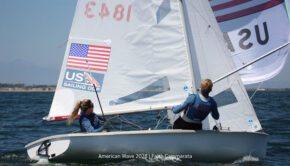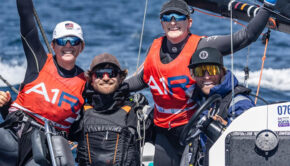No hanky panky at Tokyo 2020
Published on November 25th, 2020
In advance of the 2016 Olympics, the International Olympic Committee revealed that about 450,000 condoms would be distributed during the Rio Games. Given freely to the athletes, the IOC has learned when highly trained and physically fit athletes come together, there tends to be hanky panky.
However, the Tokyo 2020 experience is going to be much different.
The Associated Press reports there will be no late-night parties in the Athletes Village. No nights — or early mornings — on the town. Instead of getting to know their global neighbors, Olympic athletes will be encouraged to leave Japan a day or two after they’ve finished competing.
From the opening ceremony to life in the village on Tokyo Bay, the postponed 2020 Olympics will be like no other. There’ll be stringent rules and guidelines — and maybe vaccines and rapid testing — to pull off the games in the middle of a pandemic that has been blamed for more than 1 million deaths worldwide.
“Staying longer in the village increases the potential for problems,” explained John Coates, the IOC member in charge of overseeing Tokyo preparations.
Coates was asked if athletes would be discouraged from sightseeing, or looking around the city.
“Yes,” he replied simply, a short answer suggesting these Olympics will be all business with few frills.
Christophe Dubi, the Olympic Games executive director, acknowledged much is still in the planning stages with many scenarios in play ahead of the scheduled opening on July 23, 2021.
“We don’t know what the situation will be next year, but some decisions will have to be made already in December,” said Dubi.
Coates said the opening ceremony would be restricted to only athletes and a maximum of six team officials. In the past, dozens of officials — at times 50, Coates said — were allowed to march, filling in for athletes who may have skipped in order to compete the next day.
“We won’t do that this time,” Coates said. “That is just increasing the potential problem in the ceremony.”
Coates said all 206 countries would be represented in the opening ceremony, and a full contingent of 11,000 athletes will compete in the games. But the opening ceremony parade is likely to look smaller.
Officials are also wrestling with how to keep the opening ceremony from becoming a mass-spreading event, even if athletes are tested when they enter Japan and when they leave their home country.
“We don’t want to change the tradition of all athletes having the opportunity to parade in the opening ceremony,” Coates said, suggesting athletes might be tested as they entered the stadium, or in the tunnel as the come on to the track.
There are sure to be lots of rules. And athletes will be asked to follow them, as will thousands of officials, judges, media, VIPs and broadcasters who will need to enter Japan.
As for limitations on fans, that is still to be decided. “We hope we can give the opportunity to as many people as possible, including foreign spectators,” Coates said. “We want the families of the athletes who come from overseas to have an opportunity to see their children. That’s what the Olympics is about, and I hope it’s possible.”
Tokyo Olympic Sailing Program
Men’s One Person Dinghy – Laser
Women’s One Person Dinghy – Laser Radial
Men’s Two Person Dinghy – 470
Women’s Two Person Dinghy – 470
Men’s Skiff – 49er
Women’s Skiff – 49erFx
Men’s One Person Dinghy Heavy – Finn
Men’s Windsurfing – RS:X
Women’s Windsurfing – RS:X
Mixed Multihull – Nacra 17
Original dates: July 24 to August 9, 2020
Revised dates: July 23 to August 8, 2021









 We’ll keep your information safe.
We’ll keep your information safe.